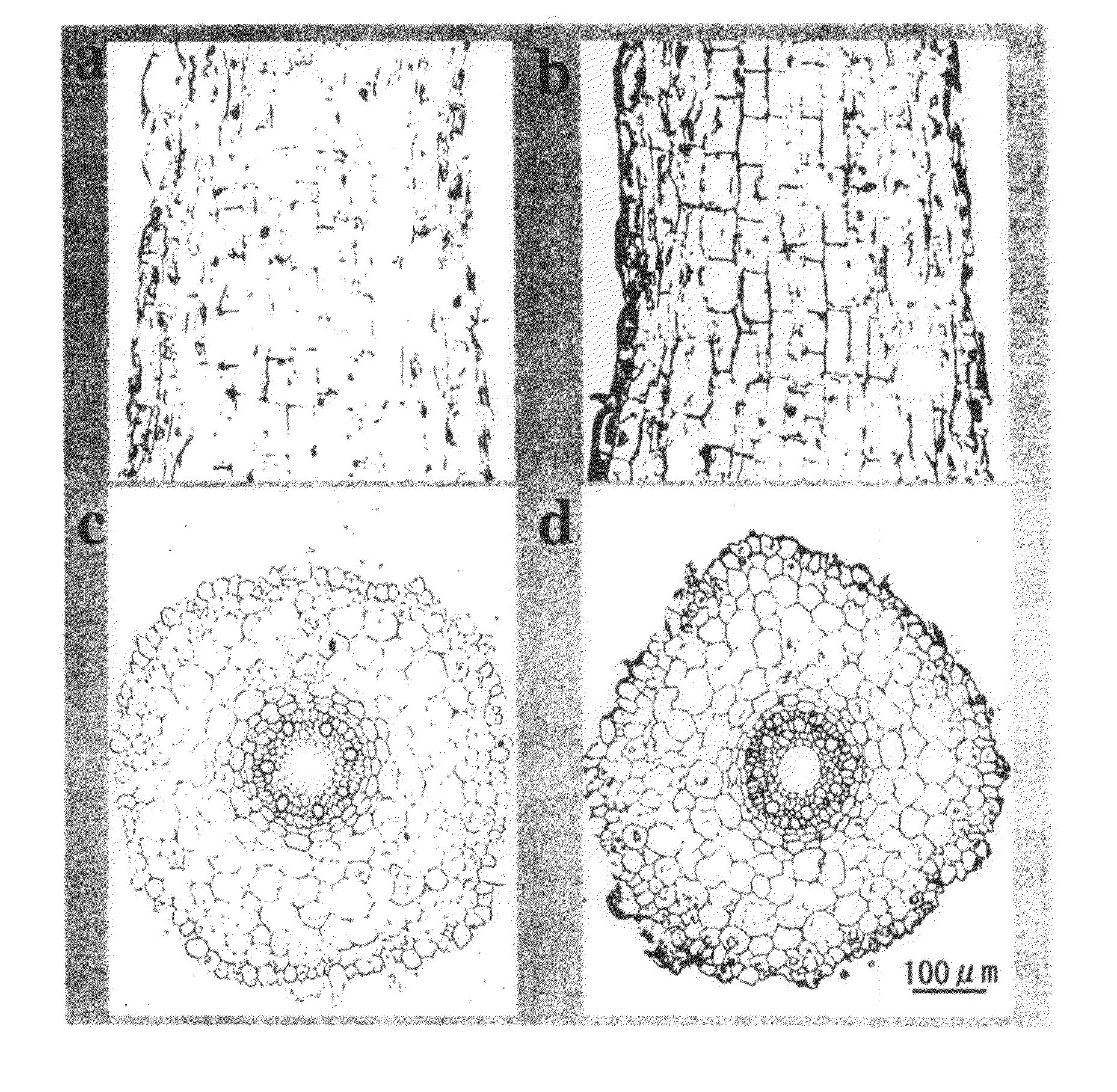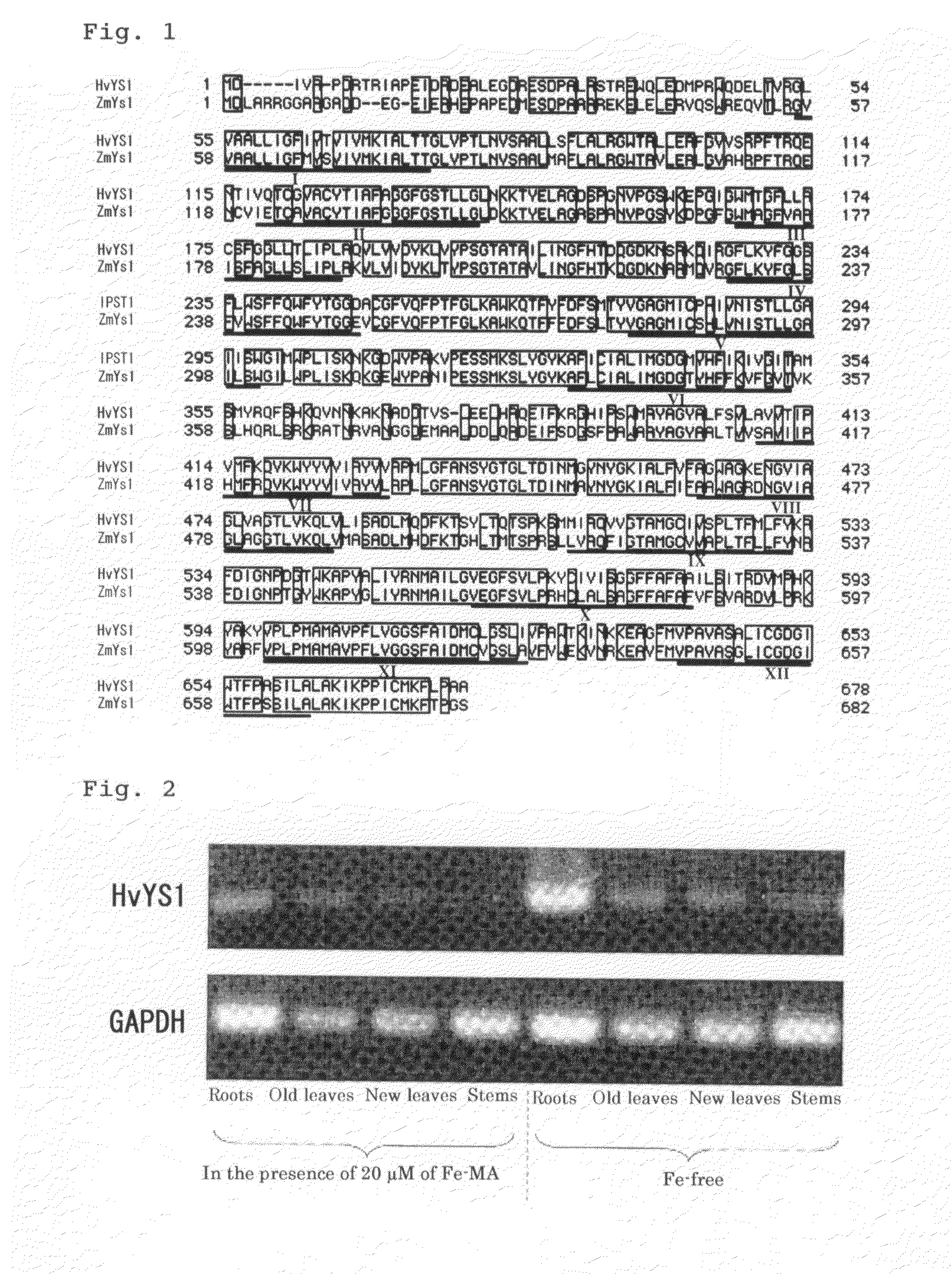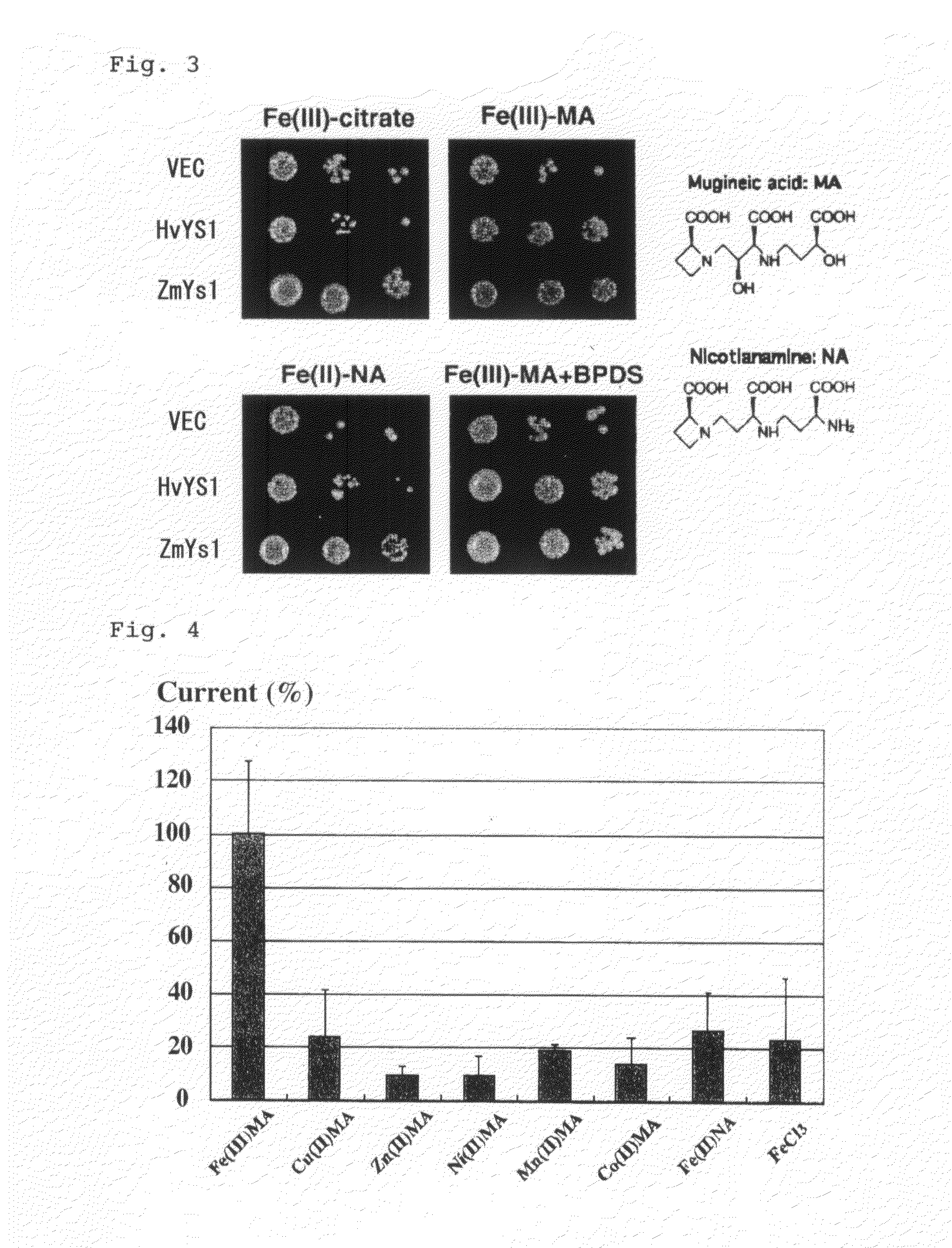Gene of transporter selective to mugineic acid-iron complex
- Summary
- Abstract
- Description
- Claims
- Application Information
AI Technical Summary
Benefits of technology
Problems solved by technology
Method used
Image
Examples
example 1
Cloning of HvYS1 cDNA
(1) Extraction of Total RNA
After seeding barley (Morex sp.), the seeds were cultivated in ⅕ Hoagland cultivation medium (hereinafter, referred to a cultivation medium). On day 16 from seeding, the young plants were subjected to iron-deficient treatment (cultivation in an iron-free cultivation medium) for 4 days. The roots of the plants were collected, and total RNA was extracted using the Concert Plant RNA Extraction Reagent (by Invitrogen Co.).
(2) 3′-RACE
cDNA was synthesized from total RNA (1 μg) with reverse transcriptase. Obtained cDNA was amplified by 3′-RACE (System of Rapid Amplification of cDNA Ends by Invitrogen Co.). Four ESTs (AF472629, BJ470821, BJ448359, and BQ765689) having 60% or more of homology were detected in the database of barley (DDBJ) using ZmYS1 as retrieval sequences, the base sequences in Table 1 were selected from the sequence of BJ470821, and oligonucleotides synthesized from the sequences were used as the primers used for 3′-RACE.
TABL...
example 2
Comparison of Gene Expression Level in the Tissue of Barley
After seeding barley (Morex), sprouts of barley were pre-cultivated in a cultivation medium supplemented with 20 μM of mugineic acid-iron complex for 1 week. The plant was then cultivated on an iron-free cultivation medium or on a cultivation medium supplemented with 20 μM of mugineic acid-iron complex for 6 days, and RNA was extracted from the roots of barley in each medium. The extracted RNA was subjected to real time RT-PCR (26 cycles) using each of primers in Table 9 by ABI Prism 7000 Sequence Detection System (by Applied Biosystems Co.).
TABLE 9PrimerBase sequenceSequence tableRT-PCR 5′-AAAAAATGCGGACGACACTGTSEQ ID NO: 22forwardprimerRT-PCR 5′-AGGCATAACCAGCGTATGCCSEQ ID NO: 23reverseprimer
GAPDH (glyceraldehyde-3-phosphatedehydrogenase) gene was used as a control. It was found that while HvYS1 was seldom expressed when a mugineic acid-iron complex was abundant, the expression level increased selectively in the roots in an ...
example 3
Function of HvYS1 in Transformed Yeast
Since double mutant fet3fet4 (DDY4 strain) of budding yeast (Saccharomyces cerevisiae) is defective in two genes responsible for absorption of divalent iron (fet3 (a gene for absorbing divalent iron after converting trivalent iron into divalent iron) and fet4 (a gene for absorbing divalent iron as it is)), the yeast can grow neither on an iron-limiting medium (Eide, D. et al., Proc. Natl. Acad. Sci. USA, 1996, vol. 93, pp. 5624-5628) nor by taking advantage of iron complexed with mugineic acid (Loulergue, C., Gene, 1998, vol. 225, pp. 47-57). To investigate the function of HvYS1 in iron transport, the present inventors have studied, using DDY4 strain into which HvYS1 cDNA has been introduced, whether the DDY4 strain in which the gene is expressed is able to grow on a medium containing Fe(III).MA as sole source of iron.
The following three plasmids were independently introduced into each of DDY4 strain and DY1457 (wild) strain: (1) a plasmid into ...
PUM
| Property | Measurement | Unit |
|---|---|---|
| Fraction | aaaaa | aaaaa |
Abstract
Description
Claims
Application Information
 Login to View More
Login to View More - R&D
- Intellectual Property
- Life Sciences
- Materials
- Tech Scout
- Unparalleled Data Quality
- Higher Quality Content
- 60% Fewer Hallucinations
Browse by: Latest US Patents, China's latest patents, Technical Efficacy Thesaurus, Application Domain, Technology Topic, Popular Technical Reports.
© 2025 PatSnap. All rights reserved.Legal|Privacy policy|Modern Slavery Act Transparency Statement|Sitemap|About US| Contact US: help@patsnap.com



